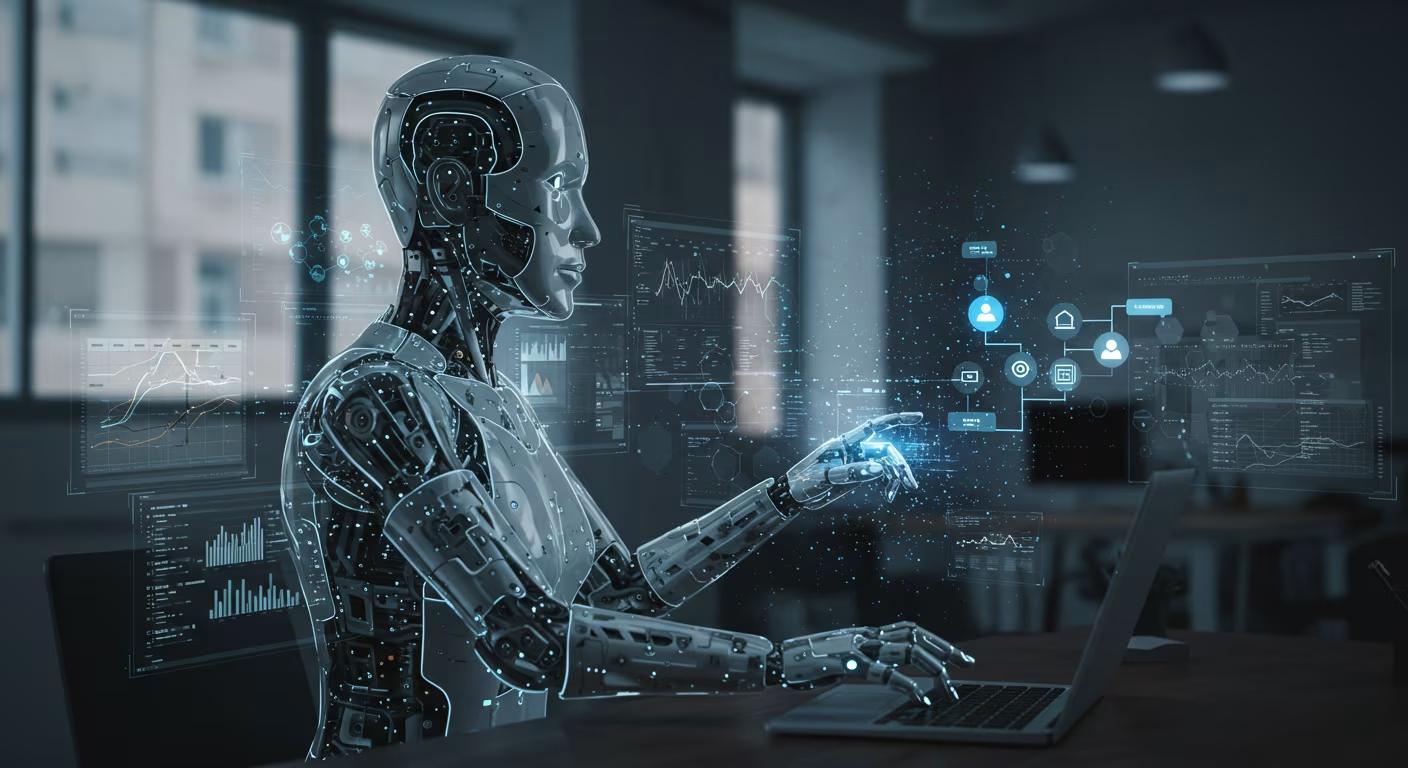Artificial Intelligence has evolved rapidly over the past decade, moving from basic rule-based systems to advanced deep learning models capable of generating human-like text, recognizing images, and even creating art. But as powerful as current AI systems are, they still largely function as tools that respond to prompts—they wait for human instructions.
Enter Agentic AI—a new paradigm where AI isn’t just reactive but proactive. These intelligent agents can set goals, plan actions, adapt dynamically, and even make autonomous decisions to accomplish complex tasks. While still in its early stages, Agentic AI is poised to become one of the most transformative innovations in the AI landscape.
But what exactly is Agentic AI, and why is it being hailed as the future of artificial intelligence?
What Is Agentic AI?
At its core, Agentic AI refers to AI systems designed to act as intelligent agents. Unlike passive systems that require user input to perform a task, agentic AI can initiate tasks, monitor progress, adjust strategies, and collaborate with humans or other systems to achieve long-term goals.
An agentic AI doesn’t just answer your questions—it sets objectives, analyzes obstacles, chooses tools, and executes decisions to reach an outcome. These systems are built with goal-directed behavior, autonomy, memory, contextual awareness, and in many cases, a form of internal “reasoning loop” to assess their own actions.
Examples include:
- A virtual business assistant that books meetings, negotiates with vendors, and follows up without prompting
- An AI agent that manages your financial portfolio, reallocating investments based on market conditions
- A personal health coach that proactively suggests exercise routines, nutrition plans, and doctor visits based on your habits and biometric data
In short, agentic AI represents a shift from tools that wait for instructions to agents that get things done—with or without direct user guidance.
How Does Agentic AI Work?
Agentic AI systems are typically built using a modular architecture that brings together multiple AI capabilities into a single framework. Key components include:
- Goal Definition: The ability to interpret or create goals from human prompts or contextual data
- Planning and Task Decomposition: Breaking down complex tasks into actionable steps
- Memory and Context: Retaining previous actions, environmental changes, and user preferences
- Autonomous Decision-Making: Choosing between alternative actions based on goals and constraints
- Multi-Agent Collaboration: Working with other agents or APIs to complete parts of a workflow
- Feedback Loops: Evaluating results and adjusting strategy if goals are not being met
In many cases, these systems use large language models (LLMs) like GPT-4 or Claude as their reasoning engine, combined with external tools such as APIs, knowledge bases, or cloud services.
For example, an agentic AI might receive a prompt like “organize a virtual conference.” Instead of replying with a to-do list, the system might:
- Identify required actions (finding speakers, booking a platform, setting a date)
- Query its calendar, browse platforms, and send speaker invitations
- Receive confirmations, adjust schedules, and register attendees
- Monitor progress and notify the user only when key decisions are needed
This proactive, loop-driven behavior is what sets Agentic AI apart from traditional chatbots or assistants.
Why Agentic AI Matters
The implications of Agentic AI are enormous. By creating systems that can take initiative and solve problems autonomously, we’re unlocking new levels of productivity, creativity, and scalability across industries.
Here’s how it can reshape the landscape:
- Business and Enterprise: Automating project management, operations, and customer service with minimal oversight
- Healthcare: Personal agents that coordinate appointments, medications, and health data in real time
- Education: AI tutors that adapt to student needs, set learning goals, and measure comprehension autonomously
- Software Development: AI developers that write code, test, debug, and deploy with little to no human intervention
- Scientific Research: Autonomous research agents that generate hypotheses, run simulations, and publish results
By reducing the need for constant human oversight, Agentic AI enables scalable decision-making—where one person can manage dozens or hundreds of tasks through intelligent delegation.
The Challenges of Agentic AI
Despite its promise, Agentic AI comes with real challenges.
- Control and Safety: Giving AI more autonomy increases the risk of unintended consequences or unsafe behavior. Clear goal alignment and guardrails are crucial.
- Accountability: Who is responsible when an autonomous AI makes a harmful or incorrect decision?
- Data Privacy: Proactive AI agents will need access to sensitive personal and corporate data to act effectively—raising ethical and legal concerns.
- Interpretability: Agentic systems often make decisions that are difficult for users to fully understand or audit, especially if driven by opaque LLMs.
- Resource Constraints: Running multi-step reasoning loops and accessing external APIs can be computationally expensive and slow.
Developers are exploring solutions such as human-in-the-loop designs, sandboxed environments, and auditable memory chains to help mitigate these concerns.
Are We Ready for Agentic AI?
While early prototypes exist, true general-purpose Agentic AI is still in development. Open-source frameworks like AutoGPT, BabyAGI, and CrewAI have shown what’s possible, but they’re often brittle, expensive, or difficult to scale in real-world settings.
Major AI companies are racing to integrate agentic capabilities into existing platforms—whether that’s a productivity suite, a cloud environment, or an enterprise automation tool.
Meanwhile, businesses and professionals must begin rethinking workflows, redefining job roles, and retraining staff for a world where machines don’t just follow orders, but take initiative.
Agentic AI isn’t just a technical leap—it’s a philosophical one. It challenges our assumptions about control, collaboration, and the division of labor between humans and machines.
A New Era of Intelligent Autonomy
Agentic AI is more than a buzzword—it’s a vision of a future where machines are partners, not just tools. These systems will help us do more with less, automate the complex, and rethink how work gets done across every industry.
The transition won’t be easy, and it won’t happen overnight. But just as we adapted to the internet, mobile devices, and cloud computing, the era of intelligent agents is coming—and those who understand it early will be best positioned to lead.
Whether you’re a developer, executive, educator, or entrepreneur, understanding Agentic AI today is your best investment in the autonomous future of tomorrow.





